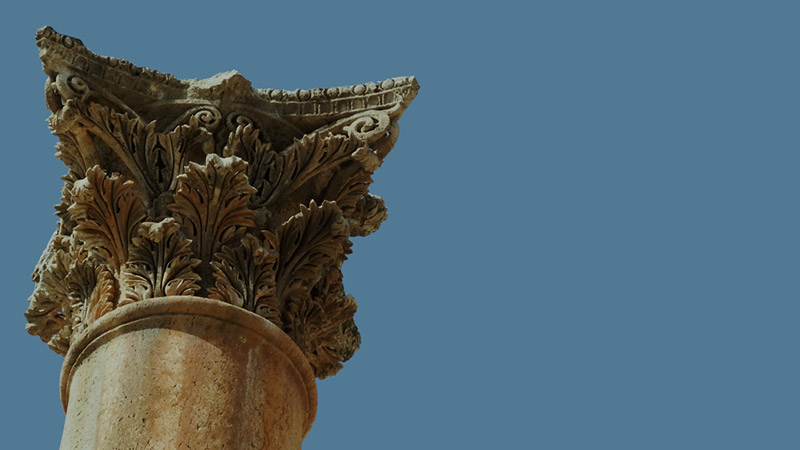More Results
Showing 12 of 41
Articles

Lord of Lords
"...the Lamb will overcome them because he is Lord of lords and King of kings - and with him will be his called, chosen and faithful followers." (Rev. 17:14)The Christian faith began with antagonism between the Jewish Temple authorities ...
MORE
No Greater Love
Korazin - The CityStudying the ruins of Korazin and other Galilean towns, scholars have pieced together a picture of family life in the first century. Korazin stood in the northwestern corner of the Galilee region, about three miles from the sea. ...
MORE
Rabbi and Talmidim
Rabbi and TalmidimThe people of Galilee were the most religious Jews in the world in the time of Jesus. This is quite contrary to the common view that the Galileans were simple, uneducated peasants from an isolated area. This perspective is probab...
MORE
Shephelah
ShephelahThe Hebrew Bible mentions the Shephelah several times. This word, meaning "low," is usually translated "lowlands" or "foothills." The term refers to a 12- to 15-mile-wide region in Judea. Though the Israelite...
MOREEncyclopedia

Olive Crusher
This olive installation is located at the modern-day city of Maresha in southern Judea. Its appearance and location in a cave are typical of ancient presses. Oil installations were commonly placed in caves because the more moderate temperatures im...
MORE
Olive Oil
Olive oil was highly valued by the people of first-century Israel. They used it in food preparation and preservation, in medicine, and in cosmetics. Olive oil was also used to lubricate wheels and hinges. Its most important use, however, was proba...
MORE
Olive Oil (Olive Farming)
Olive oil was a significant part of the daily lives of the Israelites in the first century. It was eaten in or with other food, used for skin care, used to fuel lamps, taken as medicine, and widely used in trade. It may also have been used as a lu...
MORE
Olive Oil Processing
The cultivation and harvesting of olives was essential to Galilee's first-century economy. A community olive processing installation included an olive crusher, which cracked the olives in order to produce an initial flow of oil, and an olive press...
MORE
Olive Trees
The olive tree is known for its beauty (Hosea 14:6) partially because its large ancient trunk often has the look of a productive past. Furthermore, one side of the tree's leaves are light green and the other, a much lighter green, give the leaves ...
MORE
Olives
This bowl contains both ripe and unripe olives. The green olives, pickled or salted, are an important part of the daily diet. The black ones may be salted or pickled for eating; or more likely, they may be crushed and pressed for oil.
MORE
Ripening Olives
Flower blossoms develop in the springtime, and olives appear during the summer and ripen in the fall. Olive farmers harvest both green (unripe) olives, for pickling and for eating, and black (ripe) olives, for eating and for oil. A good tree may p...
MOREGlossary

Olive Crusher Definition
The stone basin used to crush olives into pulp. A donkey pushed on a horizontal beam, which in turn rolled a millstone that crushed into a pulp ripe olives placed in a large, round basin. An olive crusher was often placed in a cave, where the mode...
MORE

















